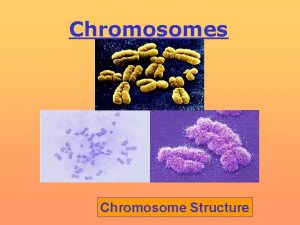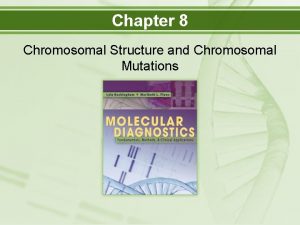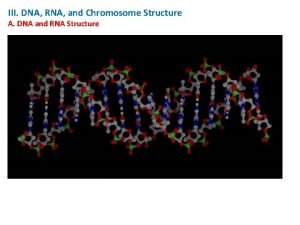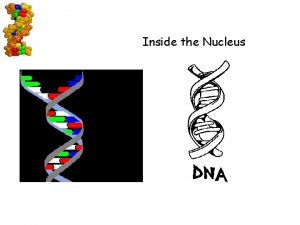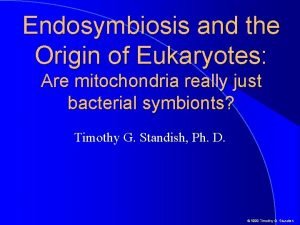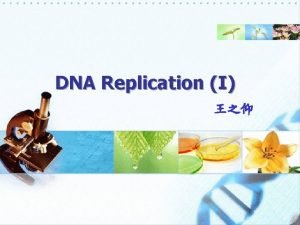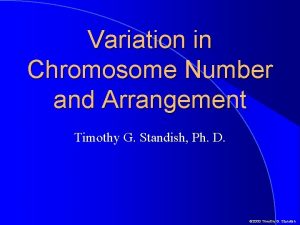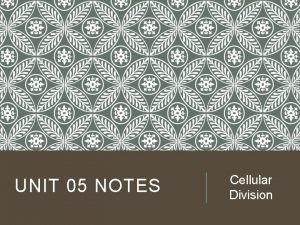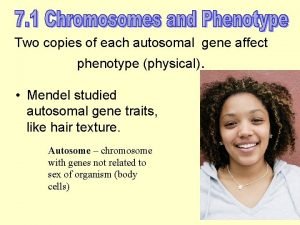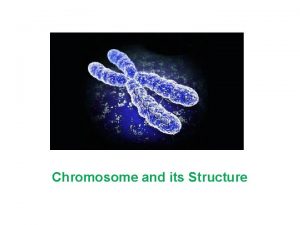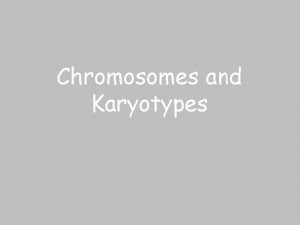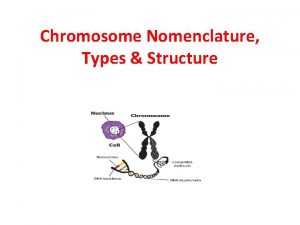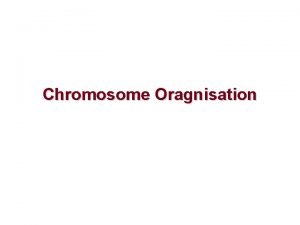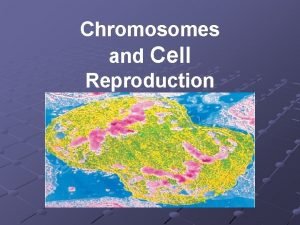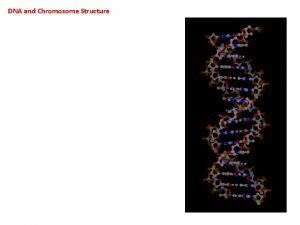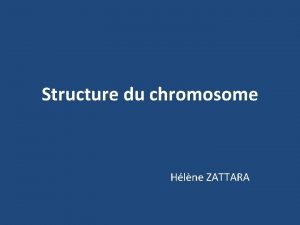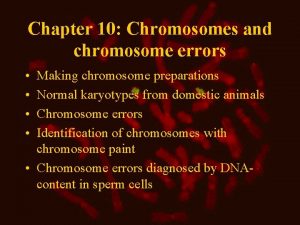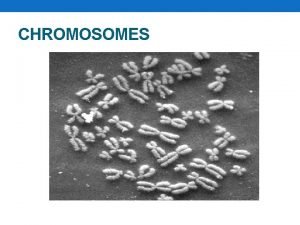Chromosomes Chromosomes A chromosome is a rodshaped structure











- Slides: 11

Chromosomes

Chromosomes • A chromosome is a rod-shaped structure made of DNA and proteins • In eukaryotes, DNA wraps around proteins called histones to help maintain the compact structure of chromosomes

Chromatids • Chromosomes consist of two halves, called chromatids • Chromatids form when DNA makes a copy of itself before a cell divides • When the cell divides, each new cell gets one chromatid from each chromosome. • The 2 chromatids are attached at one point, called a centromere • When cell division is not occurring, DNA is lesstightly coiled and forms a structure called chromatin

Chromosome Numbers • Each species has a characteristic number of chromosomes in each cell

Chromosome Types • Animal chromosomes are classified as either sex chromosomes or autosomes • Autosomes: all the chromosomes that determine characteristics • A human cell produced by sexual reproduction has 22 pairs of autosomes. • Each pair of autosomes are called homologous pairs • Same size and same shape • Traits for genes in same location

Sex Chromosomes • Sex chromosomes: determine the sex of an organism

Human Chromosomes • Humans have 46 chromosomes • 22 pairs of autosomes • 1 pair of sex chromosomes • They are X and Y – females usually are XX, males are usually XY • 23 total pairs of chromosomes

Karyotype • A karyotype is a picture of the chromosomes in a normal, dividing, human cell

Diploid • Diploid: describes cells with two sets of chromosomes • They have two autosomes for each homologous pair • 1 from mom and 1 from dad • In humans, all non-reproductive cells are diploid • Diploid abbreviated as 2 n (‘di’ = 2)

Haploid • Haploid: describes cells with only 1 set of chromosomes • These are sperm and egg (gametes) cells • They have half the chromosomes of diploids • Haploid cells have only 1 autosome of a homologous pair and 1 sex chromosome • 23 total chromosomes • Come either from mom OR dad • Haploid is usually abbreviated as 1 n (‘hap’ = half or 1).

Meeting of Sperm and Egg • When a sperm cell (1 n) combines with an egg cell (1 n), they create a new organism, whose cell will be diploid (2 n). • If reproduction occurred between 2 diploids, the new cell would have too many chromosomes and not be functional.
 Prokaryotic chromosome vs eukaryotic chromosome structure
Prokaryotic chromosome vs eukaryotic chromosome structure Alterations of chromosome structure
Alterations of chromosome structure Structure of chromosome
Structure of chromosome Dna e rna
Dna e rna Loci biology
Loci biology What happens in telophase
What happens in telophase Ribosome
Ribosome Eukaryotic chromosome structure
Eukaryotic chromosome structure Eukaryotic chromosome structure
Eukaryotic chromosome structure Number of chromosomes
Number of chromosomes 23 chromosome pairs
23 chromosome pairs Difference between autosomes and sex chromosome
Difference between autosomes and sex chromosome
